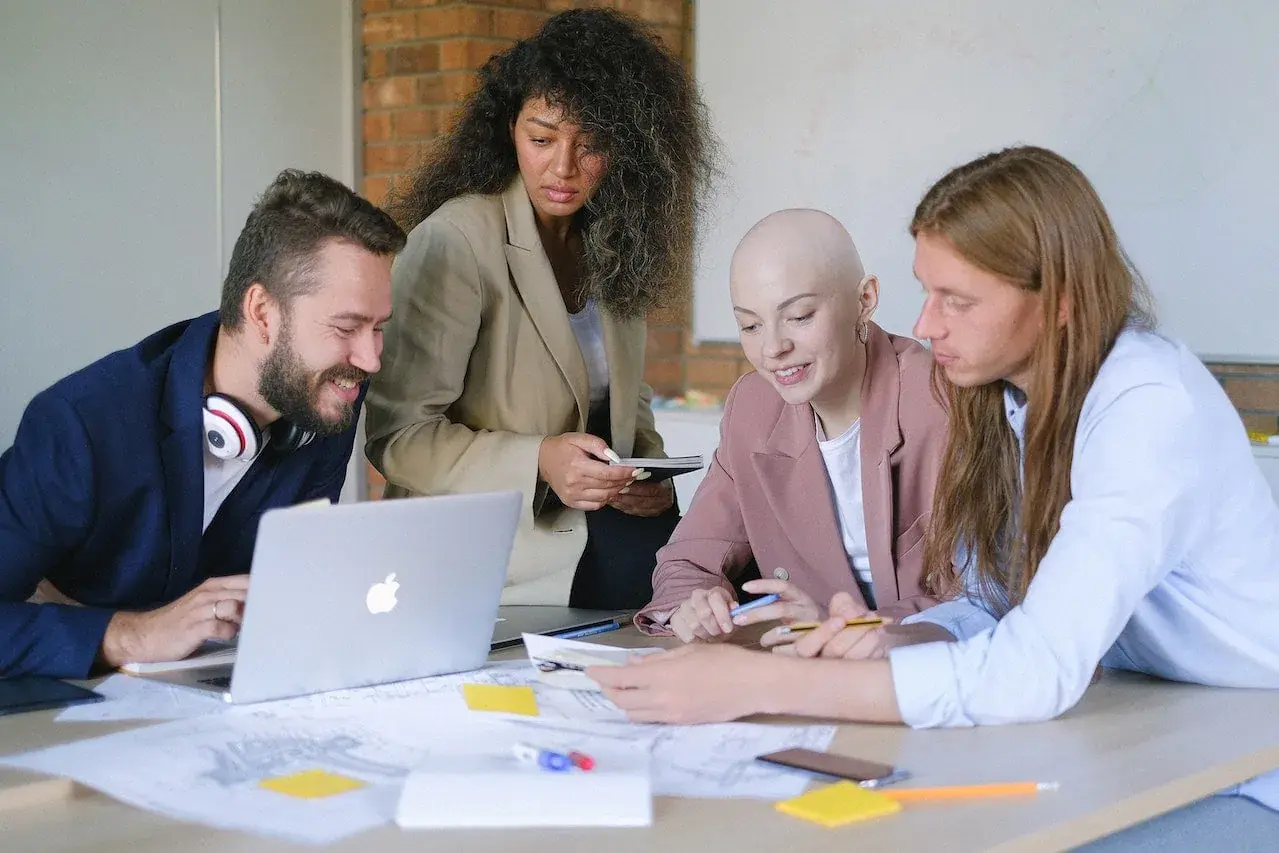What Is Manipulative Insincerity? Radical Candor Coaches Share Their Epic Feedback Fails
We've all been there at one time or another — too tired to care or argue. Hanging on by a thread with no craps left to give. This is how folks often...
5 min read
Radical Candor Aug 24, 2020 1:39:08 PM

*This blog post about the need for Radical Candor in schools is by Katie Novak and Mirko Chardin, authors of Equity by Design: The Power and Promise of UDL.
Our schools, despite our best efforts, are not meeting the needs of all learners. Beverly Daniel Tatem, a nationally recognized authority on racial issues in America, educator and author of the critically acclaimed book, Why Are All The Black Kids Sitting Together in the Cafeteria? And Other Conversations About Race, urges our systems to weigh our impact over our intentions. And damn, that’s hard.
There is no doubt that educators and schools have the best intentions, but our results, which can be predicted by zip code and skin color, require us to have hard conversations about what it truly means to meet the needs of all learners.
And yet, given the current climate, it may feel mean and/or inappropriate to have these conversations -- perhaps even disrespectful to question intent especially in light of concerns about safety. Many teachers are being asked to return to classrooms without clear protocols that would minimize fears about health and safety and this will create barriers to meaningful learning.
This stress, which can derail the ability to think clearly, manage emotions, and make rational decisions is what author Daniel Goleman, author of Emotional Intelligence: Why It Can Matter More Than IQ, refers to as an “amygdala hijack.” We acknowledge that before addressing teachers with Radical Candor, it is paramount that we commit to both psychological and physical safety, to be trauma-informed and to listen to what educators need to feel safe so they are in a space where they can learn.
Only then can we reasonably expect teachers to adapt instruction, manage teaching and learning while social distancing and simultaneously support homeschooling for their own children. Once we create pathways where teachers have voice, choice and safety, we can address the inequities in our systems and help our educators better meet the needs of our learners.
It may feel like it’s not the year to do this. We can’t possibly bring up the quality of instruction, talk about race and critically analyze the impact we’re having -- or can we?
We deeply believe that not talking about inclusive instruction, which includes conversations about race and design, is a form of Ruinous Empathy. And teachers deserve better. This is where Radical Candor comes in.
We have to challenge ineffective, inequitable, racist and exclusionary practices directly whether they occur in-person, or online. We have to use Radical Candor to talk about how we serve our BIPOC (Black, Indigenous and people of color) students, empower their families and communities and address systemic racism through the design of lessons and assessments."
Caring personally as an educational leader means caring for students whose needs are not being met. It also means caring for the educators who have made serving these students their lives’ work. It's important to put their safety first, listen to their concerns and help them to cope with being an educator in the midst of COVID-19.
As practicing education leaders and former teachers, we care deeply about the profession of teaching and believe that teachers deserve a high-quality curriculum, ongoing professional learning and a safe and healthy environment that treats them as expert learners who are capable of infinite growth. And that means providing feedback when practices don’t result in success for all students.
It means sharing the power and the promise of universal design for learning (UDL) which provides flexible options and choices that ensure all students have options to learn that are accessible, engaging, culturally responsive, trauma-informed, linguistically appropriate and antiracist.
We have to challenge ineffective, inequitable, racist and exclusionary practices directly whether they occur in person or online. We have to use Radical Candor to talk about how we serve our BIPOC (Black, Indigenous and people of color) students, empower their families and communities and address systemic racism through the design of lessons and assessments.
To not address the design of curriculum and teaching because we fear that our colleagues are overwhelmed and we don’t want to hurt their feelings will only perpetuate the status quo. It also implicates us as silent accomplices in honoring exclusionary practices. Teachers are doing the best they can with what they have, and they deserve patience, compassion and grace.
They also deserve leaders who have the moral courage to point out blind spots and push back when students’ needs are not being met, despite intent. After, as we shared, we have created a space where fear and lack of safety do not create barriers to growth, reflection and learning.
Radical Candor means taking the time for meaningful conversations that honor educators and help them to improve their craft so we can value impact over intent.
Radical Candor is not easy, but is necessary, especially in light of the uncertainty about reopening in the fall. Although we don’t know what school will look like, we know that teacher and student safety, as well as student learning, have to be central to the conversations we are having. And, we can’t have those conversations if we aren’t willing to address inequities head-on while caring deeply about the students we serve and the educators who serve them.
Katie Novak is a practicing education leader, an internationally recognized expert in Universal Design and inclusive practice, an education consultant and author of seven books, including the bestselling UDL Now and Innovate Inside the Box, co-written with George Couros. Her eighth book, Equity by Design: The Power and Promise of UDL is co-written with Mirko Chardin.
 As the Founding Head of School of the Putnam Avenue Upper School in Cambridge, Mass., Mirko Chardin is a nationally recognized leader in culturally connected teaching and learning, recruiting and retaining educators of color, restorative practice and school culture. Mirko is a race, diversity and cultural proficiency facilitator and leadership coach for the Aspire Institute at Boston University’s New Wheelock College of Human Development, a principal mentor for the Perone-Sizer Creative Leadership Institute, a Trustee at Wheaton College and an active hip-hop artist. Equity by Design: The Power and Promise of UDL, a collaboration with Novak, is out now.
As the Founding Head of School of the Putnam Avenue Upper School in Cambridge, Mass., Mirko Chardin is a nationally recognized leader in culturally connected teaching and learning, recruiting and retaining educators of color, restorative practice and school culture. Mirko is a race, diversity and cultural proficiency facilitator and leadership coach for the Aspire Institute at Boston University’s New Wheelock College of Human Development, a principal mentor for the Perone-Sizer Creative Leadership Institute, a Trustee at Wheaton College and an active hip-hop artist. Equity by Design: The Power and Promise of UDL, a collaboration with Novak, is out now.
————————————————————————————————————————————————————————————–
Need help practicing Radical Candor? Then you need The Feedback Loop (think Groundhog Day meets The Office), a 5-episode workplace comedy series starring David Alan Grier that brings to life Radical Candor’s simple framework for navigating candid conversations.
You’ll get an hour of hilarious content about a team whose feedback fails are costing them business; improv-inspired exercises to teach everyone the skills they need to work better together, and after-episode action plans you can put into practice immediately to up your helpful feedback EQ.
We’re offering Radical Candor readers 10% off the self-paced e-course. Follow this link and enter the promo code FEEDBACK at checkout.
We’re excited to announce that Radical Candor is now available as an hour-long videobook that you can now stream at LIT Videobooks. Get yours to stream now >>

We've all been there at one time or another — too tired to care or argue. Hanging on by a thread with no craps left to give. This is how folks often...

According to Gallup's Leadership and Management Indicator, only 21% of employees in the U.S. trust the leadership in their organization. In addition,...